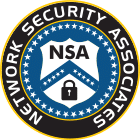5 Tips To Keep Your Business Running During The COVID-19 Pandemic
Has your business stayed active during the coronavirus pandemic so far? It can be difficult to maintain continuity when your staff is stuck at home. Check out the five tips below to make sure your remote work environment is effective and secure.
The coronavirus pandemic is in full swing and has not shown any signs of slowing down. In order to fight the spread of the virus, businesses across the country have sent their staff members home and hastily pivoted to a remote work model.
Have you been able to keep your staff working while they’re stuck at home? Without the right technologies and processes in place, it can be difficult to maintain business continuity.

Maintaining Business Continuity Through Remote Work
The best way to keep your business productive is by deploying remote access and hosting solutions. Remote hosting is a method for delivering software applications, databases, and files to users from remote servers that are housed off-site in data centers. This is opposed to the traditional, pre-cloud model in which all software was hosted directly on the user’s PC or laptop, or in nearby hardware.
When needed (i.e., during a quarantine like this), users can access the application and their data by securely logging in to the remote server via the cloud, usually through an Internet browser. Once logged in, the user can make use of the software, access and modify data, and more, all without having to actually be at the data center, or install the software on their own device.
By deploying one of these solutions, you can allow your staff to securely access work data, keep in touch with each, hold meetings, and more. Good options include Microsoft SharePoint, OneDrive & Teams – don’t forget to deploy VPN software to keep connections secure.
Top 5 Tips For Successful Remote Work
A remote workforce keeps your employees productive at home so there’s no need to go into the office. This ensures social distancing takes place while keeping your organization operational during this difficult time.
There are a number of primary considerations that must be kept in mind to effectively manage a remote workforce, including:
- Remote Access Solutions: The right cloud-based solutions will be necessary to make sure access to data, applications, and other resources while working from home. A technology partner should assist with the selection, implementation, and ongoing support for cloud solutions to make sure they’re the right choice for those with sensitive data to consider.
- Communication: It’s best to have a cloud-based phone system, such as VoIP business phones, in place to make sure they’re able to access their usual workline, voicemail, and various features while they’re at home. A VoIP system lets them make and receive calls over the internet and keep in communication from their desk or smartphone.
- Cybersecurity Solutions: Cybersecurity is a major concern during a crisis like this. Switching to a work from home model comes with a number of cybersecurity risks that may have been overlooked in the rush to get going and maintain business continuity. Make sure you have defensive software (firewalls, antivirus) installed on employee home devices, and password protection enabled on home Wi-Fi networks.
- Emergency Procedures: Does your staff know how to respond to a major outage, or similar event that limits their ability to keep working? Especially now as your team is separated and operating remotely, you need to put together a business continuity plan that includes emergency procedures.
- VPN: When you use a virtual private network (VPN), your data is encrypted, or hidden, as it moves from your device to the VPN and then continues onto the Internet. That makes it harder for an attacker to identify you as the source of the data.
Like this article? Check out the following blogs to learn more:
A Message From Our CEO
Robert Davis
Technology Helps Healthcare Organizations Enhance Patient Experiences

